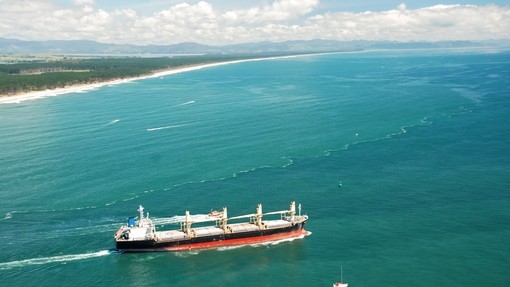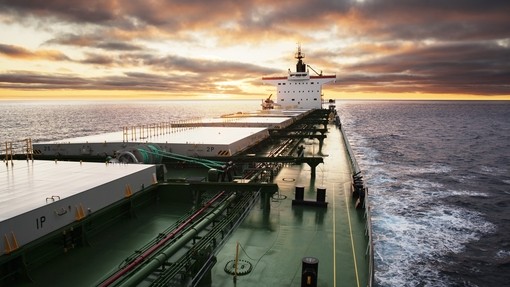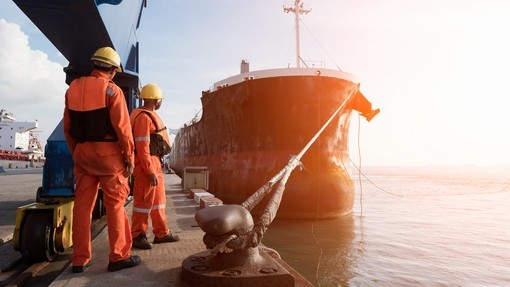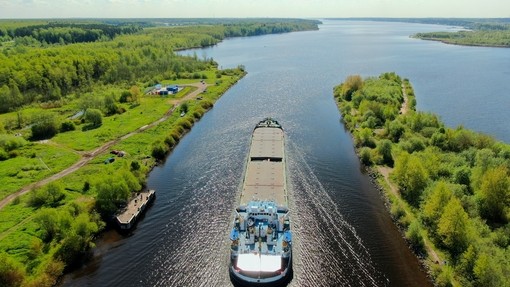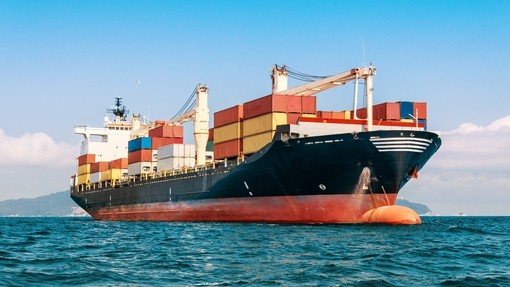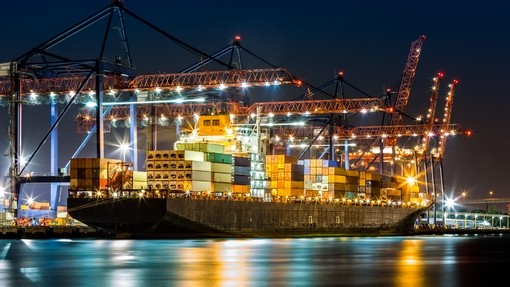Nautical Challenge Ltd -v- Evergreen Marine (UK) Ltd [2017] EWHC 453 (Admlty)
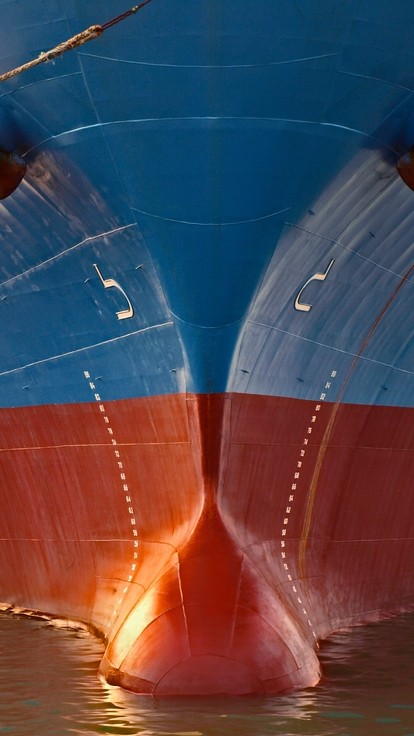
Details
This is an Admiralty Court case before Mr Justice Teare involving a collision that considers whether the narrow channel rule or the crossing rule (rules 9 and 15 of the International Regulations for Preventing Collisions at Sea 1972 (the Collision Regulations) respectively) applies in instances where one ship is passing through a narrow channel and another is navigating towards the channel, waiting to enter it. This case clearly sets out that, in these instances, the narrow channel rule applies and not the crossing rule.
The judgment also deals with the importance of electronic and witness evidence, VHF communications in collision avoidance and other factors that will play a part in apportioning collision liability.
Factual background
In February 2015 a collision occurred between a laden VLCC, “ALEXANDRA 1”, and a laden container vessel, “EVER SMART”, outside the dredged channel that serves as the entrance and exit to port Jebel Ali in the UAE. The damage suffered by “ALEXANDRA 1” was in the region of US$32 million and the damage suffered by “EVER SMART” amounted to almost US$4 million.
“EVER SMART” was about to disembark her pilot when exiting the channel while “ALEXANDRA 1” was waiting within the pilot boarding area to embark that same pilot and enter the channel. Once “EVER SMART” had successfully disembarked the pilot, her master ordered her engines to increase to full sea speed and continued out of the channel, albeit maintaining a course on the (wrong) port side of it rather than on the (correct) starboard side. Thereafter she proceeded, seemingly without her crew properly noticing “ALEXANDRA 1”’s location, through the pilot boarding area when the port bow of “EVER SMART” struck the starboard bow of “ALEXANDRA 1”. At the point of collision, “EVER SMART” was making 12.4 knots over the ground while “ALEXANDRA 1” was making 2.4 knots over the ground.
The evidence before the Admiralty Court was that three seconds before the collision the master of “EVER SMART” said ‘What’s that?’, ostensibly in reference to the apparent shape of “ALEXANDRA 1”’s hull looming immediately before him. Shortly after the incident “EVER SMART”’s master is also said to have asked his bridge watch keeper and helmsman (and additionally, it is suggested, himself) why it was that none of them had managed to see “ALEXANDRA 1” prior to the collision.
Legal issues
As is customary in more modern times, both vessels carried a Voyage Data Recorder or VDR, (otherwise colloquially known as ‘black boxes’; devices which record navigational data of use in accident investigations) and therefore the parties were able to agree on most of the navigational facts.
However, despite the assistance of electronic evidence, the issue of liability for the collision remained in dispute.
The applicability of the crossing rule
“EVER SMART” argued that the crossing rule applied when she exited the channel, while “ALEXANDRA 1” contended that the narrow channel rule was applicable and the crossing rule was not.
The crossing rule provides that:
‘When two power-driven vessels are crossing so as to involve risk of collision, the vessel which has the other on her own starboard side shall keep out of the way and shall, if the circumstances of the case admit, avoid crossing ahead of the other vessel.’
The narrow channel rule states:
‘A vessel proceeding along the course of a narrow channel or fairway shall keep as near to the outer limit of the channel or fairway which lies on her starboard side as is safe and practicable.’
Counsel for “EVER SMART” submitted that, due to the courses being taken by the two vessels, there had been a risk of collision and “ALEXANDRA 1” had “EVER SMART” on her starboard bow such that “ALEXANDRA 1” was under a duty to keep out of “EVER SMART”’s way under the crossing rule. Accordingly, “ALEXANDRA 1” should attract the preponderance of blame for the collision under the crossing rule.
Conversely, counsel for “ALEXANDRA 1” submitted that case law establishes that the crossing rules have limited, if any, application to questions of navigation in and around a narrow channel and do not apply if one vessel is in a narrow channel while another is navigating towards the channel in preparation for entering it. They argued “EVER SMART” was consequently at fault given that she was on the port and wrong side of the channel in the lead up to the collision.
Mr Justice Teare cited a number of relevant cases that considered the two rules, many of which served to support “ALEXANDRA 1”’s arguments. He relied most heavily on the Hong Kong Final Court of Appeal decision in Kulemesin -v- HKSAR [2013] 16 HKCFA 195 in which Lord Clarke said ‘safety requires a vessel approaching the channel so as to proceed along it to navigate so that if… vessels pass in the channel they will pass port to port. This will be achieved if the narrow channel rule applies. If it does not, there is considerable scope for confusion.’ Mr Justice Teare emphasised similar points made by Willmer J. in the “EMPIRE BRENT” (1948) 81 Ll. L. Rep. 306 and Hewson J. in the “CANBERRA STAR” [1962] ] 1 Lloyd’s Rep. 24 that the narrow channel rule applies to vessels navigating within a narrow channel rule and not the crossing rule. He therefore concluded that ‘In the interests of safety… the crossing rules cannot have been intended to apply where one vessel is navigating along a narrow channel and another vessel is navigating towards that channel with a view to entering it.’ As such, not only was “EVER SMART” wrongly on the port side of the channel prior to the collision under the narrow channel rule but also “ALEXANDRA 1” was not under a duty to keep out of her way under the crossing rule, which did not apply.
Mr Justice Teare went on to briefly discuss other relevant facts that could provide alternative bases for arguing that the narrow channel rule applies rather than the crossing rule. In particular, counsel for “ALEXANDRA 1” argued that the crossing rule was not applicable because she had not been on a sufficiently defined course, which was required for the crossing rule to apply (as explained in the “ALCOA RAMBLER” [1949] AC 236). The judge agreed: he considered that “ALEXANDRA 1” had not been on an adequately constant direction or heading; she was simply waiting to embark her pilot and it could not therefore be said that she had been on a sufficiently defined course.
The judge continued by considering apportionment of liability for the collision – using the methodology for apportionment of liability developed in the “NORDLAKE” and “SEAEAGLE” [2016] 1 Lloyd’s Reports 565 pursuant to section 187 of the Merchant Shipping Act 1995 – by assessing the relative culpability and causative potency of each vessel’s faults.
He ruled that, apart from being in breach of the narrow channel rule, both the visual and radar lookout on board “EVER SMART” was ‘seriously defective; and that to order full sea speed when still within the channel was premature and not good seamanship (albeit brought about because of the lack of a good lookout and the failure to spot “ALEXANDRA 1” until it was too late). For these reasons, “EVER SMART” was found to be 80% liable for the collision and “ALEXANDRA 1” correspondingly 20%.
Poor lookout
When addressing “ALEXANDRA 1”’s liability, the judge found that she had also failed to keep an adequate lookout. However, he made a distinction between visual and aural lookouts and concluded that, while the “ALEXANDRA 1” maintained a reasonably good visual lookout (certainly as contrasted to that of “EVER SMART”), her aural lookout was inadequate. This was because her master had misheard a VHF radio conversation between port control and a third vessel which hindered his judgement of the situation and impaired his ability to correctly react to “EVER SMART”’s movements. What is more, the judge also commented that the master failed to contact by VHF either port control or “EVER SMART” to clarify the situation, despite his awareness that something was wrong.
Collision evidence
The judgment also provided some useful commentary on the evidence adduced before the Court:
- Electronic evidence: the judge was particularly critical that the parties had not agreed on a translated transcript of audio evidence from the vessels’ respective VDRs. He stressed that this should have been agreed between the parties long before the start of the trial as required by the recent changes to the Civil Procedure Rules Part 61 and related Practice Direction (Civil Procedure (Amendment) Rules 2017 SI 95 of 2017 and the 88th update to the Practice Directions, which came into force on 28 February 2017) and section N of the Admiralty and Commercial Courts Guide.
- Witness evidence: no signed witness statement was ever obtained from “EVER SMART”’s master. It is possible that this impinged on the credibility of other evidence that was put before the Court (e.g. the master’s statement of facts or his log book entries, particularly where they were found to be unexplainably incorrect).
Comment
This case makes clear that, in circumstances where one vessel is transiting a narrow channel and another vessel is waiting at the entrance of that channel to enter it, it is the narrow channel rule and not the crossing rule that applies. The crossing rule does not automatically apply simply because two vessels are crossing one another in or near a narrow channel.
This judgment also serves as a reminder that, if owners wish to avoid a collision, their bridge teams must keep a good aural lookout as well as a good visual one and should make proper use of all the navigational equipment available to them.
Owners and their insurers involved in collisions should ensure that – where possible and if the value of the case permits – contemporaneous signed witness statements must be obtained from relevant crew, preferably (certainly in cases where English law applies) by a solicitor for reasons of privilege. Following collisions the form of any electronic evidence which is to go before the court should also be agreed with opponents long before trial.
Hill Dickinson’s team of legally qualified mariners frequently deal with collision claims. They are able to advise clients on any of the issues that may arise from this judgment.
This article originally appeared in the April 2017 edition of shipping case digest. Other articles include:
Kyokuyo Co Ltd -v- A.P Moller – Maersk A/S [2017] EWHC 654 (Comm)
OMV Petrom SA -v- Glencore International AG [2017] EWCA Civ 195 (27 March 2017)

